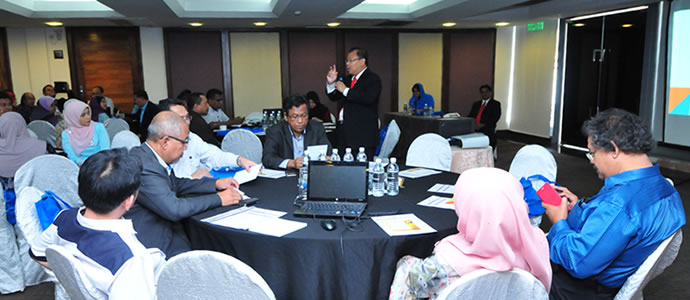Rebranding Exercise Imminent For UKM
WEDNESDAY, 17 SEPTEMBER 2014 16:50

By Saiful Bahri Kamaruddin
Pix Ikhwan Hashim
BANGI, 10 September 2014 – Some centres and departments of The National University of Malaysia (UKM) needed to be rebranded so as to be able to keep up with innovation and change.
Vice-Chancellor Professor Datuk Dr Noor Azlan Ghazali said continuous evaluation of performance of the departments and faculties needed to be done so that fine-tuning can be carried out by them.
Launching UKM’s one-day inaugural Workshop on Planning Competency Development for Academic Administrators here today, Prof Noor Azlan said administrators must be brave enough to try for change and to be innovators.
“You are only leaders if you bring change. If you maintain things (as they are) you are only managers,” he said. Deans and deputy deans of faculties took part in the workshop together with directors and deputy directors of all UKM’s academic centres and institutes.
Director of the Centre for Professional and Leadership Development, Associate Professor Dr Rohayu Abdul Ghani facilitated the workshop.
Prof Noor Azlan hoped the workshop would identify the areas that needed to be rebranded saying that it would not be easy as the university matures, managing it becomes even more complex.
“In all organisations we have to give space for experimentation where capabilities will be enhanced”. All the department heads and deans of faculties needed to create platforms for sharing, he said.
Running a university requires different set of capabilities, he said, some of which are in tacit form such as ability to negotiate, building relationships, getting what is wanted and how to get research fundings.
Dr Rohayu briefing the participants said tacit skills are not something that can be acquired through formal means but rather through experience. The challenge is that tacit knowledge which all departmental leaders needed to be adapt at cannot be read or studied from books.
They also needed to be able to pass on such knowledge to their second liners who will eventually succeed them.
Participants were required to form teams to devise ways to measure competency and then present their findings followed by discussion.
![]()


